County Carlow is home to gentle flowing rivers, historic estates, medieval castle ruins, lush countryside, and pre-historic burial sites.
Historic footprints of traders, Norse invaders and holymen mark the banks of the River Barrow which runs directly through County Carlow.

Table of Contents
Location of County Carlow
Ireland's second smallest county, Carlow is located inland in the southeast of the province of Leinster.

The Carlow Coat of Arms was first recorded in 1665. It is linked to the Butler family.
The English lions signify the Butlers' land was granted to them by the English crown.
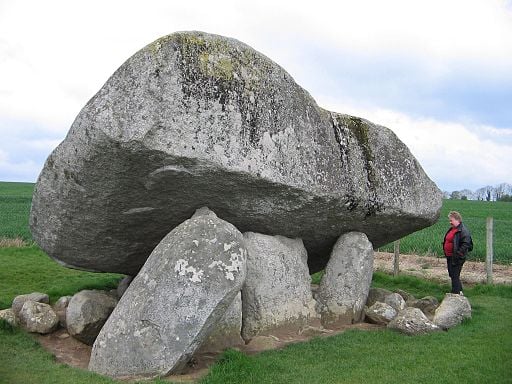
The Dolmen County
The nickname of the "Dolmen County" was bestowed upon Carlow because it is home to Europe's largest dolmen. The capstone of the Brownshill Dolmen, located just outside Carlow town, is estimated to weigh over 150 tonnes (330,000 pounds).
How our Celtic forefathers maneuvered such a rock into position over this portal tomb is an amazing feat of ancient engineering!
Haroldstown Dolmen is another well-preserved example of a portal dolmen and is located near the town of Tullow. An 8th century hillside fort can be seen in Rathgall.

Carlow Town
Carlow town is built around the River Barrow which marks the boundary between counties Laois and Carlow. It is an ancient town, founded thousands of years ago. In the 14th century it served as the capital of the whole island.
Carlow Cathedral was the first Catholic Cathedral to be built in Ireland after Catholic Emancipation in 1829.
It was completed in 1833. The town boasts many historical sites of interest including the Town Hall, the Courthouse, and St. Patrick's College.
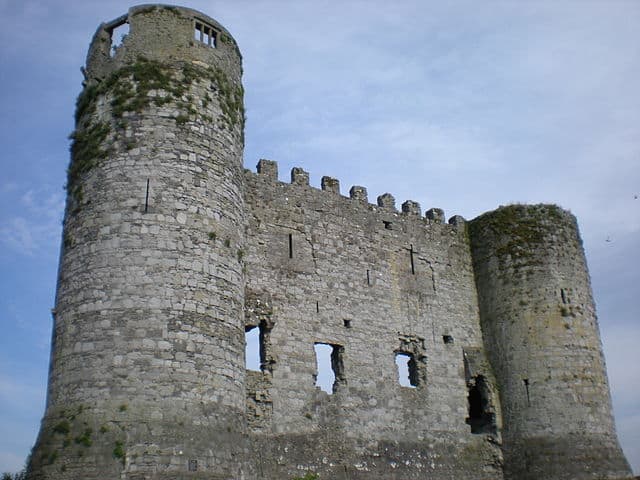
The ruins that once were Carlow Castle sit on a height above the River Barrow near Carlow town.
Built between 1207 and 1213, it is a National Monument of Ireland.

Scenic walks and drives pass along the banks of the River Barrow. Horses once towed barges along this lazy river.
Their towpaths from days gone by are now traffic-free, providing relaxed trailways for today's walkers, birdwatchers and anglers.

Fishing in County Carlow
Fishing access is mainly confined to areas near the towns.
Trout can be caught in the Republic of Ireland without a fishing license, but would-be anglers need to be aware that one is required to catch salmon.
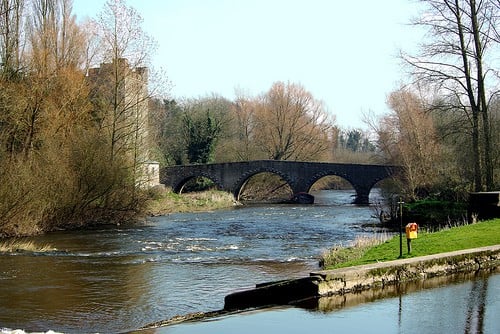
A medieval castle sits between the trees on the banks of the Barrow.
There are many castle ruins to be seen all over this county of lush green pastures.

One man and his dog enjoy the calming sound of running waters, observed by a local swan, near Millford.
Swans are found all over Ireland, and many live along the River Barrow in County Carlow.

Man-made weirs occur frequently along the river.

Old Country Houses
Many old country houses with extensive gardens can be visited throughout the county.
Borris House is located in some of the most spectacular scenery in Ireland and is a perfect wedding location. Even the gates to this old demesne are impressive.

Duckett's Grove was at the center of a 12,000 acre estate which dominated County Carlow for over 300 years.
Other gardens and castles which can be visited include Ballyloughan, Ballymoon, Huntington and Black Castle.
Gardens open to the public include Altamount House, Hardymount, and Kilgraney House to name a few.

Nicknames for People from County Carlow
I have to admit I first met a Carlow man in New York, not Ireland. Nicknames abound for people from Carlow.
"Scallion Eaters" finds its origins in the 19th century when most of the onions sold in Leinster were grown in Carlow.
"Barrowsiders" is another more romantic name for those who hail from the banks of this beautiful river.
Famous People From County Carlow
Upon researching this post I discovered some famous historical characters with strong Carlow ties.
Pierce Butler (1744 - 1822) one of the Founding Fathers of the United States was born in Carlow.
Another Carlow man John Tyndall (1820 - 1893) was the first scientist to explain why the sky is blue.
Myles Keogh (1840 - 1876) grew up in Carlow at the time of Ireland's Great Hunger, survived the American Civil War as a Union commander, only to be killed with Custer at the Battle of the Little Big Horn.
Today, the Hollywood actress Saoirse Ronan calls Co. Carlow home, despite her New York birth.
Tourist Information for County Carlow
These few, simple pictures are merely a small sample of the beauty and tranquility County Carlow offers. The following sites are helpful for anyone planning a trip:
Carlow County Museum
Discover Ireland - The River Barrow
Borris House
Here's the link for other counties we have visited so far on our tour of Ireland, county-by-county.
Thanks for following my recipes and ramblings.

Slán agus beannacht,
(Goodbye and blessings)
Mairéad -Irish American Mom
Pronunciation - slawn ah-gus ban-ock-th
Mairéad - rhymes with parade
Here are some more recipes and ramblings you might enjoy...
Ardmore - An Irish and American Town Name
Furze - The Yellow Flower of the Irish Landscape
Ireland - County By County
- County Fermanagh - Ireland's Lake District
- County Kerry - The Kingdom
- County Sligo Land of Heart's Desire
- County Monaghan - A Land of Lakes and Drumlins




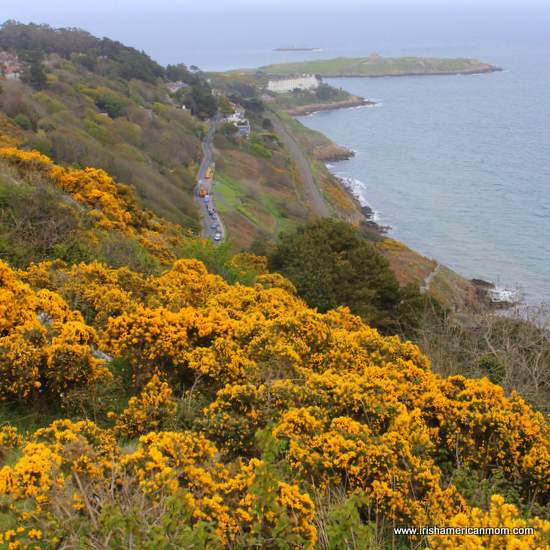
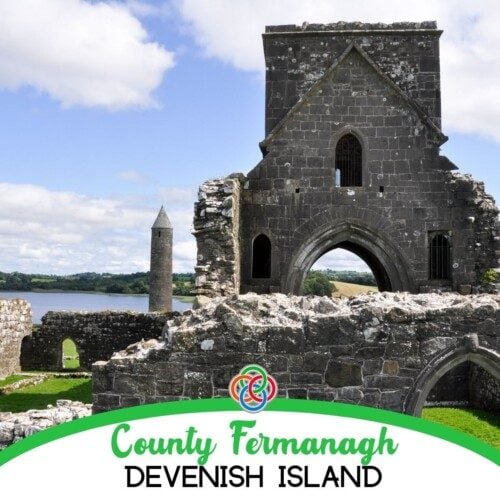











Cheryl Barker
You make me want to go to Ireland! 🙂 Would love to see the historic estates, medieval castle ruins, and lush countryside. Exciting stuff! 🙂
Irish American Mom
Cheryl - By the time we have visited all 32 counties you will definitely be booking your trip. There are many wonderful, ancient and historic sites throughout Ireland. I took them for granted when I lived in Ireland, but now that I live across the Atlantic, I have really come to appreciate these ancient sites which bind us to our past.
Grammy
Added to list!
Tom Donagher Avlon House B&B
Well Done, could not have said it better my self and I live in Irelands second smallest county Carlow.
Irish American Mom
Dear Tom - Thanks for your comment. It means a lot to get the seal of approval from a real Carlow man. Avalon House looks lovely, and a perfect base for tourists hoping to visit the historic sites of Carlow.
Best wishes!
Mairead